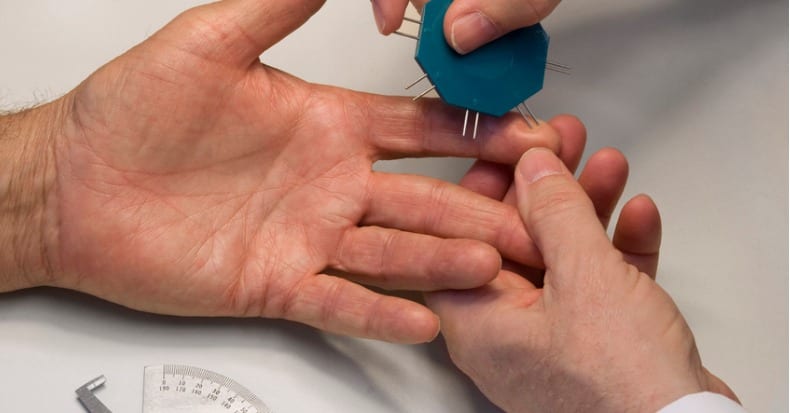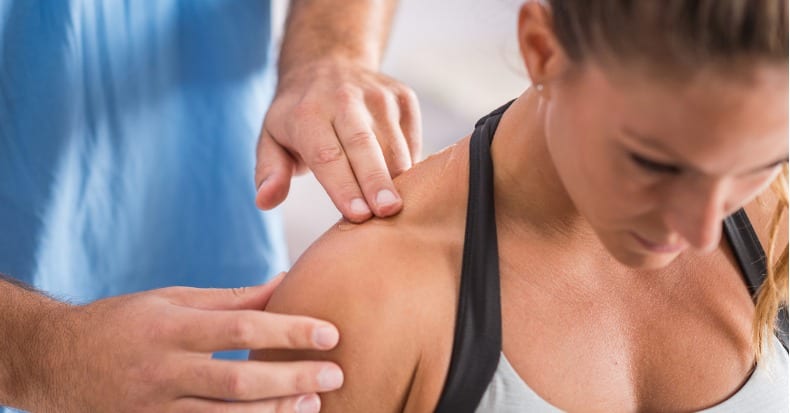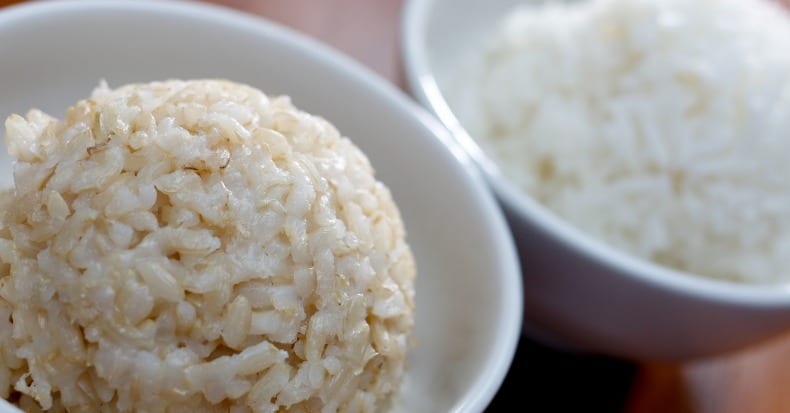Newest Articles
When someone is diagnosed with carpal tunnel syndrome (CTS), there seems to be an automatic assumption that surgery is imminent or at least inevitable. However, treatment guidelines for CTS that are intended to be followed by ALL healthcare professionals ALWAYS recommend an initial course of non-surgical treatment, NOT jumping directly to surgery. Unfortunately, evidence-based treatment [..]
Osteoarthritis (OA) is the most common form of arthritis and is caused when the smooth cartilage surface of an articulating/moving joint wears away until there is bone-on-bone contact that results in both loss of movement and pain. Although OA most commonly affects the joints under the greatest load (the hips and the knees), it can [..]
While tinnitus is commonly associated with a ringing sound in the ears, it can also involve a buzzing, hissing, or whistling noise. The sound can be intermittent or constant and can change in volume. The noise often intensifies in a quiet room when background noise is absent, such as at night, which can interfere with [..]
We previously discussed how walking backward can strengthen the low back extensor muscles, which can aid in both the treatment and prevention of back pain. According to a study published in the January 2019 issue of the journal Cognition, walking backward (or even watching a video simulating backward motion) may also improve one’s memory.
The [..]
The total sum of suffering caused by migraine headache is higher than any other kind of headache (1). About 38 million adults in the United States are migraine sufferers, and 91% experience migraine-associated disability (2, 3, 4). Migraine headache is often incapacitating, with considerable impact on social activities and work, and may lead to significant [..]
Kinesiophobia, the fear of movement, is a common occurrence for patients with chronic low back pain (cLBP). Unfortunately, self-restricting one’s daily physical activity can result in muscle weakness and atrophy. This can lead to further inactivity and more muscle weakness, and subsequently, poor tolerance of normal activities of daily living, work absenteeism, and depression. When [..]
People with migraines know all too well about that throbbing, pulsating, and nauseated feeling that accompanies their headaches and the associated disability that often results. The underlying cause of migraine headaches is still not well understood, but genetics (family history), chemical imbalances in the brain (serotonin, in particular), environmental factors (weather, allergens), and hormonal changes [..]
Carpal tunnel syndrome (CTS) has long been recognized as an occupational disease, and though the incidence of many other occupational diseases has decreased over time, CTS appears to be becoming more prevalent.
A 2019 study looked at the impact/benefit of wrist-specific exercises and oral enzyme therapy on automotive assembly line workers with CTS (excluding those [..]
Patellofemoral pain (PFP) is commonly associated with running, jumping, squatting, and walking up/down stairs. It’s thought that PFP is caused by excessive rubbing between the back of the patella and groove, or track, that it rides in. Besides overuse, additional causes for PFP pain include muscle imbalance or weakness or direct trauma. The condition is [..]
While doctors of chiropractic enjoy helping their patients get better, the preference is to avoid injury in the first place, and if that’s not possible, to reduce the risk for serious injury. This is especially important when it comes to car accidents, as whiplash associated disorders (WAD) injuries can persist for months to years and [..]
In today’s world, consumers are inundated with contradicting news about foods that are good for them and foods that can be detrimental to their health. Rice is one such food. Is it good for you? Is it bad? Let’s find out…
In a 2019 study, researchers in India randomly assigned 169 overweight adults (aged 25-65 [..]
Both health care providers and lay people may manipulate the spine. The health care provider group most likely to employ spinal manipulation is chiropractic. A recent (2017) in-depth analysis indicates that there are approximately 70,000 practicing chiropractors in the United States, the majority of whom use spinal manipulation in their clinical practice (1). There are [..]















